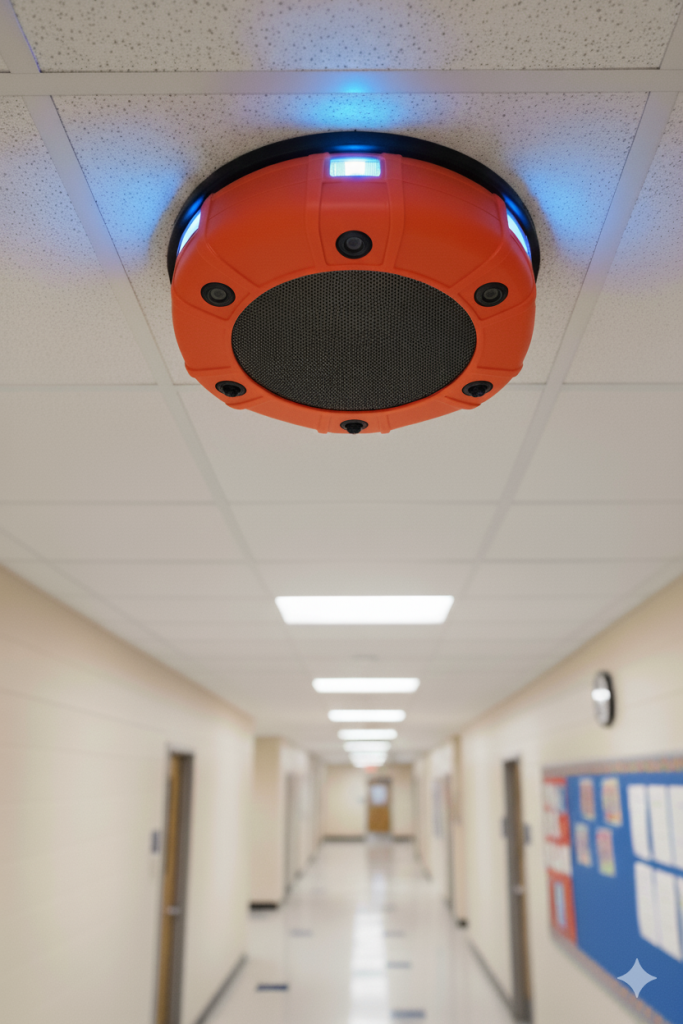
The System That Sees You Coming
Most security systems react. School.Contact recognizes.
When a teacher with a 111 area code enters a building, doors unlock. When a student with a 333 number tries to access adult content, the system blocks it—no monitoring needed, just math. When an unknown phone number calls a school, the system already knows it’s not from the education network.
This is infrastructure-level protection.
The Identity Revolution
Think about how much time schools waste on passwords, usernames, and access codes. Every new platform requires a new login. Every year brings new credentials. Parents manage dozens of accounts just to stay connected to their child’s education.
School.Contact eliminates all of that.
One number unlocks everything:
- Elementary: [email protected]
- Middle School: Same number, new domain: @california.middleschool.email
- High School: Same number again: @california.highschool.email
- Laboratory Schools at Colleges & Universities:
@colleges.email or @universities.email
The identity stays constant. The protections stay active. The complexity disappears.
Why Numbers Are Better Than Names
“But my child’s name is special! Why use numbers?”
Because names create problems numbers solve:
The Privacy Problem: [email protected] tells everyone your child’s name, gender, and ethnicity. Student 3334567890? That could be anyone.
The Uniqueness Problem: There are tens of thousands Jose Garcias in the US. There’s only one student 3334567890 in California.
The AI Problem: Artificial intelligence needs to verify who it’s talking to. Is this a 7-year-old or a 17-year-old? Names don’t tell you. Area codes do—instantly.
The Permanence Problem: Names change. Kids go by nicknames. Families change surnames. Numbers are forever.
The AI Voice Assistant: Your School’s New Front Desk
Imagine calling your child’s school at 10 PM (because that’s when you finally have time) and getting real answers:
“Hi, I’m calling about my daughter’s math grade…”
“I see your daughter is in Mrs. Johnson’s class, code 1115551212. Her current grade is B+, with one missing assignment from last Tuesday. Would you like me to send you the details or schedule a conference with Mrs. Johnson?”
“Can you tell me in Spanish?”
[Switches to fluent Spanish] “Por supuesto…”
This isn’t science fiction—this is natural language AI applied to education. It works because the system knows who you are (from your parent area code), who your child is (linked in the database), and who their teacher is (111 area code).
24/7 answers. Zero wait time. Every language.
Devices Designed for the Unthinkable
Let’s talk about what happens when everything goes wrong.
Wall-Mounted Units: The New Fire Alarm for other school emergencies
Positioned strategically throughout every school:
- High-contrast orange emergency button (visible even in darkness)
- Speaker/microphone for two-way communication
- Tamper-proof casing (harder to vandalize than a fire alarm)
- Always powered, always connected with built-in redundancies
In a crisis, one press:
- Locks down the building automatically
- Alerts law enforcement with exact location
- Provides location-specific instructions: “Room 204: Barricade the door. Move to the corner. Stay quiet.”
- Streams live audio and video to emergency responders
Handheld Units: When Moving Means Surviving
Teachers on field trips. Staff in portables. Administrators during evacuations. They need mobile protection:
- Satellite connectivity (works anywhere on Earth)
- Dedicated VHF/UHF bands (reserved for emergencies, like police radios)
- GPS beacon (so responders know exactly where you are)
- LED strobe and siren (helps rescuers find you)
- Waterproof and shock-resistant (built for chaos)
During Hurricane Katrina, cell networks failed. During 9/11, networks overloaded. School.Contact devices keep working when everything else fails.
The Technology That Thinks
Real-time threat detection: AI systems analyze audio continuously. The sound of breaking glass. Raised voices becoming screams. Gunshots. The system recognizes these patterns and responds in milliseconds.
Automated lockdown: Doors lock. Lights adjust. PA system activates. All without human intervention—because in a crisis, every second matters.
Intelligent routing: Emergency calls don’t just go to 911. They go to the closest responders with all relevant information: building layouts, number of students in each classroom, medical needs of specific students.
Predictive analytics: Over time, the system learns normal patterns. When something deviates—an unknown person in the building, unusual movement patterns—security is alerted before anything happens.